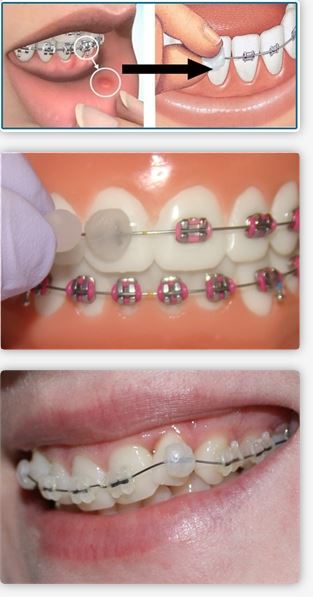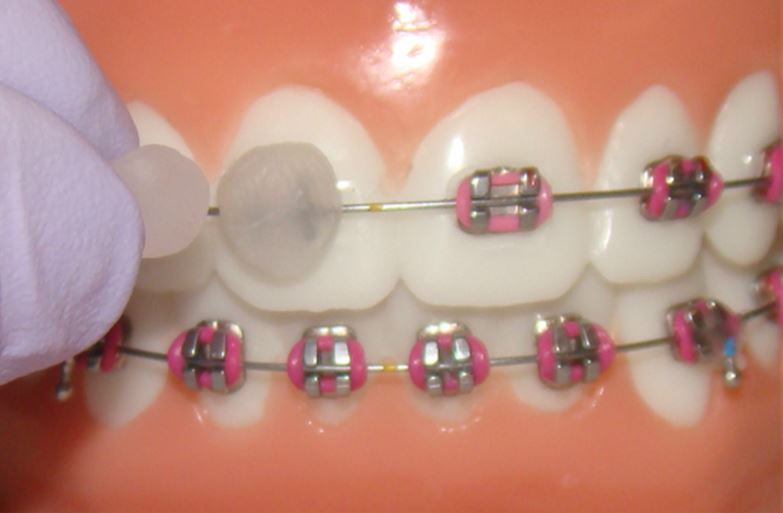 Thanks to Orthodontic treatment, many Houstonians are now able to smile without any insecurities of crooked teeth thanks to braces. However, just like any other human inventions, braces have their limitations. Getting braces for the first time can be uncomfortable as they can irritate the tongue, lips and even the cheeks. Braces are made up of brackets and wires, and the mouth takes time to adjust to the new invasion. The lips take time to adjust to the correct position to accommodate the braces, and during this time you will experience a lot of discomforts. Wires from the braces may also detach and start poking the cheeks or tongue causing bleeding.
Thanks to Orthodontic treatment, many Houstonians are now able to smile without any insecurities of crooked teeth thanks to braces. However, just like any other human inventions, braces have their limitations. Getting braces for the first time can be uncomfortable as they can irritate the tongue, lips and even the cheeks. Braces are made up of brackets and wires, and the mouth takes time to adjust to the new invasion. The lips take time to adjust to the correct position to accommodate the braces, and during this time you will experience a lot of discomforts. Wires from the braces may also detach and start poking the cheeks or tongue causing bleeding.
Other effects caused by braces include jaw pain, tooth decay, and even allergic reactions. All these can be managed by the use of drugs prescribed by a doctor. For the discomfort and irritation of the lips, tongue, and cheeks, Orthodontic Wax is the answer.
Orthodontic Wax – What is it?
Orthodontic wax is a wax that is applied on the wire or bracket of a brace that is irritating the mouth. The wax provides a smooth surface that does not affect the sensitive tissues of the mouth allowing the other sore areas to heal properly. Orthodontic wax is not harmful as it contains non-toxic ingredients such as beeswax, paraffin wax, and carnauba wax. There is, therefore, no adverse effect when you accidentally swallow some of the wax.
How is Orthodontic Wax applied?
Orthodontic Wax may be challenging to apply for people who are using it for the first time, but with constant practice, you can get the hang of it. The first step is identifying the bracket or wire that is causing you irritation. If you are having difficulties in identifying the wire, pick the one that is directly across from the sensitive area in the mouth. Before applying the wax, ensure that your hands are clean and dry. It is more advisable to floss or brush the teeth before applying Orthodontic Wax to create a clean surface. After brushing the teeth, ensure that the brace or wire is dry. This can be done by allowing it to air dry or by using a sterilized gauze to dry the area. Orthodontic wax sticks better in a dry area than a wet area.
After completely drying the teeth, break off a tiny piece of the wax and then soften it by rolling the wax on your fingers. The wax used should be as small as a pea or popcorn kernel. Once the wax is entirely soft, press it against the problem wire or bracket and wait until it sticks. You can then rub the area until it smoothens out.
Is eating with the Wax in place advisable?
Whether to eat with the wax or without eat depends on you. Some people find it uncomfortable to eat with the Orthodontic Wax while others find it okay. For those who experience irritation, remove your wax first before eating and then apply some more after the meal. Remember to brush your teeth and dry them properly before reapplying the wax. For people who eat with the wax, remember to change it immediately after the meal because food particles tend to stick to the wax. When brushing and flossing, take off the wax first to avoid damaging your toothbrush. Orthodontic wax makes braces more comfortable and bearable.


